![非线性物理科学:变换群和李代数(英文版) [Nonlinear Physical Science: Transformation Groups and Lie Algebras]](https://pic.tinynews.org/11209037/rBEQWFFkyFYIAAAAAApx27gbjz8AADxpQDuO0sACnHz766.jpg)
非线性物理科学:变换群和李代数(英文版) [Nonlinear Physical Science: Transformation Groups and Lie Algebras] pdf epub mobi txt 电子书 下载 2025
- Nonlinear Physics
- Lie Algebras
- Transformation Groups
- Mathematical Physics
- Differential Geometry
- Symmetry
- Applied Mathematics
- Physics
- Scientific Computing
- Nonlinearity

具体描述
内容简介
《非线性物理科学:变换群和李代数(英文版)》为作者在俄罗斯、美国、南非和瑞典多年讲述变换群和李群分析课程的讲义。书中所讨论的局部李群方法提供了求解非线性微分方程解析解通用且非常有效的方法,而近似变换群可以提高构造含少量参数的微分方程的技巧。《非线性物理科学:变换群和李代数(英文版)》通俗易懂、叙述清晰,并提供丰富的模型,能帮助读者轻松地逐步深入各种主题。作者简介
伊布拉基莫夫(Ibragimov,N.H.),教授,瑞士科学家,被公认为是在微分方程对称分析方面世界上最具权威的专家之一。他发起并构建了现代群分析理论,并推动了该理论在多方面的应用。内页插图
目录
PrefacePart Ⅰ Local Transformation Groups
1 Preliminaries
1.1 Changes of frames of reference and point transformations
1.1.1 Translations
1.1.2 Rotations
1.1.3 Galilean transformation
1.2 Introduction of transformation groups
1.2.1 Definitions and examples
1.2.2 Different types of groups
1.3 Some useful groups
1.3.1 Finite continuous groups on the straight line
1.3.2 Groups on the plane
1.3.3 Groups in IRn
Exercises to Chapter 1
2 One-parameter groups and their invariants
2.1 Local groups of transformations
2.1.1 Notation and definition
2.1.2 Groups written in a canonical parameter
2.1.3 Infinitesimal transformations and generators
2.1.4 Lie equations
2.1.5 Exponential map
2.1.6 Determination of a canonical parameter
2.2 Invariants
2.2.1 Definition and infinitesimal test
2.2.2 Canonical variables
2.2.3 Construction of groups using canonical variables
2.2.4 Frequently used groups in the plane
2.3 Invariant equations
2.3.1 Definition and infinitesimal test
2.3.2 Invariant representation ofinvariant manifolds
2.3.3 Proof of Theorem
2.3.4 Examples on Theorem
Exercises to Chapter 2
3 Groups adnutted by differential equations
3.1 Preliminaries
3.1.1 Differential variables and functions
3.1.2 Point transformations
3.1.3 Frame of differential equations
3.2 Ptolongation of group transformations
3.2.1 0ne-dimensional case
3.2.2 Prolongation with several differential variables
3.2.3 General case
3.3 Prolongation of group generators
3.3.1 0ne-dimensional case
3.3.2 Several differential variables
3.3.3 General case
3.4 First definition of symmetry groups
3.4.1 Definition
3.4.2 Examples
3.5 Second definition of symmetry groups
3.5.1 Definition and determining equations
3.5.2 Determining equation for second-order ODEs
3.5.3 Examples on solution of determining equations
Exercises to Chapter 3
4 Lie algebras of operators
4.1 Basic definitions
4.1.2 Properties of the commutator
4.1.3 Properties of determining equations
4.2 Basic properties
4.2.1 Notation
4.2.2 Subalgebra and ideal
4.2.3 Derived algebras
4.2.4 Solvable Lie algebras
4.3 Isomorphism and similarity
4.3.1 Isomorphic Lie akebras
4.3.2 Similar Lie algebras
4.4 Low-dimensionalLie algebras
4.4.1 0ne-dimensional algebras
4.4.2 Two-dimensional algebras in the plane
4.4.3 Three-dimensional algebras in the plane
4.4.4 Three-dimensional algebras in lR3
4.5 Lie algebras and multi-parameter groups
4.5.1 Definition of multi-parameter groups
4.5.2 Construction of multi-parameter groups
5 Galois groups via symmetries
5.1 Preliminaries
5.2 Symmetries of algebraic equations
5.2.1 Determining equation
5.2.2 First example
5.2.3 Second example
5.2.4 Third example
5.3 Construction of Galois groups
5.3.1 First example
5.3.2 Second example
5.3.3 Third example
5.3.4 Concluding remarks
Assignment to Part I
Part II Approximate Transformation Groups
6.1 Motivation
6.2 A sketch on Lie transformation groups
6.2.1 0ne-parameter transformation groups
6.2.2 Canonical parameter
6.2.3 Group generator and Lie equations
6.3 Approximate Cauchy problem
6.3.1 Notation
6.3.2 Definition of the approximate Cauchy problem
7 Approximate transformations
7.1 Approximate transformations defined
7.2 Approximate one-parameter groups
7.2.1 Introductory remark
7.2.2 Definition ofone-parameter approximate
7.2.3 Generator of approximate transformation group
7.3 Infinitesimal description
7.3.1 Approximate Lie equations
7.3.2 Approximate exponential map
Exercises to Chapter 7
8 Approximate symmetries
8.1 Definition of approximate symmetries
8.2 Calculation of approximate symmetries
8.2.1 Determining equations
8.2.2 Stable symmetries
8.2.3 Algorithm for calculation
8.3.2 Approximate commutator and Lie algebras
9.1 Integration of equations with a smallparameter usingapproximate symmetries
9.1.1 Equation having no exact point symmetries
9.1.2 Utilization of stable symmetries
9.2 Approximately invariant solutions
9.2.1 Nonlinear wave equation
9.2.2 Approximate travelling waves of KdV equation
9.3 Approximate conservation laws
Exercises to Chapter 9
Assignment to Part II
Bibliography
Index
用户评价
这本书的名字,特别是“非线性物理科学”这个前缀,立刻勾勒出它所要触及的物理学前沿地带。非线性现象在自然界中无处不在,从湍流到气候变化,从生物系统的振荡到宇宙的大尺度结构,它们都展现出复杂而难以预测的行为。我一直好奇,是否存在一种统一的数学语言,能够有效地描述和分析这些非线性系统。《非线性物理科学:变换群和李代数》这本书,仿佛正是提供了这样一种可能。我期待书中能够深入探讨变换群如何作为一种强大的概念工具,来捕捉和描述非线性系统中的对称性,以及这些对称性如何引导我们理解系统的演化路径。而“李代数”,则让我联想到更精细的数学分析,我希望书中能够揭示李代数如何帮助我们理解连续对称性,并将其转化为解决具体非线性问题的有效方法。我尤其希望能看到书中给出一些具体的例子,说明如何运用李代数的理论来分析和理解某些经典的非线性物理模型,比如相变、混沌动力学或者场论中的某些问题,从而展现这些抽象数学概念的实际应用价值和解释力。
评分我最近在书店里偶然翻到了这本《非线性物理科学:变换群和李代数》,当时就被它的目录深深吸引了。虽然我可能还未能完全消化其中的每一个细节,但仅仅是看到其中涉及的各个主题,我就已经感受到一种即将解锁全新视野的激动。特别是关于“群论在量子力学中的应用”那一章节,我一直觉得量子世界充满了奇特的对称性和内在联系,而群论恰恰是描述这些特性的绝佳语言。我非常好奇,书中是如何通过变换群来理解粒子的量子态,以及李代数又如何在描述这些对称性变换的生成元方面发挥作用。除此之外,我还在目录中看到了“李群与微分方程的解法”这样的标题,这让我联想到很多物理过程最终都可以归结为解微分方程,如果李群能够提供一种系统性的方法来寻找和分类这些方程的解,那将是多么强大的工具!我迫不及待地想知道,这本书是否能够将这些抽象的概念与具体的物理问题联系起来,例如在解决某些非线性动力学系统时,李代数的强大之处究竟体现在哪里,它又如何帮助我们发现那些隐藏在复杂演变背后的规律。
评分我一直对物理学中那些能够统一和解释大量现象的数学框架感到着迷。当我注意到《非线性物理科学:变换群和李代数》这本书时,我立刻被它所承诺的深度和广度所吸引。这本书的题目暗示着一种强大的工具箱,能够帮助我们理解那些非线性的、看似混乱的物理过程。我设想,书中或许会从介绍群论的基本概念开始,然后逐步深入到变换群的构建及其在不同物理场景下的应用。我很想了解,究竟是什么样的“变换”能够被称之为“群”,以及这些群是如何反映物理系统内在的对称性的。而“李代数”,在我看来,更像是对连续变换的一种微观层面的描述。我希望书中能够清晰地解释,李代数的生成元和结构如何与物理系统的连续对称性联系起来,并且如何在求解涉及非线性的物理方程时发挥作用。我尤其好奇,这本书是否会提供一些具体的计算方法或算法,来展示如何运用这些数学工具来分析具体的物理模型,从而揭示非线性现象背后的深层数学结构。
评分这本《非线性物理科学:变换群和李代数》的封面设计给我一种既专业又极具吸引力的感觉。深邃的蓝色背景搭配银色的标题字体,仿佛预示着书中将要探索的宇宙奥秘和抽象数学的精妙。我本身并非科班出身,但一直对物理学,尤其是那些能够解释复杂现象的理论框架充满好奇。这本书的名字,特别是“变换群”和“李代数”这两个词,虽然听起来有些高深,但也让我联想到物理世界中隐藏的对称性以及它们如何影响事物的演变。我设想,这本书或许会以一种循序渐进的方式,从一些直观的例子入手,逐步引导读者理解这些抽象概念是如何与现实世界的物理规律联系起来的。我尤其期待书中能够阐述清楚,这些看似纯粹的数学工具,究竟是如何帮助科学家们理解诸如粒子物理、流体力学甚至宇宙学中的非线性现象的。我希望作者能够巧妙地平衡理论的严谨性和概念的清晰度,让像我这样的非专业读者也能从中获得深刻的启发,不再将这些数学概念视为高不可攀的门槛,而是看作理解物理世界的有力钥匙。
评分作为一名对理论物理有浓厚兴趣的学生,我在寻找一本能够深入探讨非线性现象背后数学根源的书籍。当我看到《非线性物理科学:变换群和李代数》这本书时,一种强烈的预感告诉我,我找到了我一直在寻找的宝藏。这本书的标题直接点出了其核心内容,即运用变换群和李代数来理解和解决非线性物理问题,这正是我所感兴趣的领域。我尤其期待书中能够详细阐述变换群如何在描述物理系统的对称性方面扮演至关重要的角色,以及这些对称性如何影响系统的动力学行为。例如,在凝聚态物理或粒子物理中,很多体系的性质都与它们的对称性密切相关,理解了对称性,就仿佛抓住了问题的关键。我希望书中能给出具体的例子,说明如何通过分析系统的变换群来推导出其物理性质,甚至预测新的现象。同时,李代数作为变换群的线性化描述,其在连续对称性上的应用更是让我期待。我希望这本书能够帮助我理解,李代数的结构特性如何编码了物理系统的连续对称性,以及如何利用李代数的理论来分析和求解非线性微分方程。
相关图书
本站所有内容均为互联网搜索引擎提供的公开搜索信息,本站不存储任何数据与内容,任何内容与数据均与本站无关,如有需要请联系相关搜索引擎包括但不限于百度,google,bing,sogou 等
© 2025 book.tinynews.org All Rights Reserved. 静思书屋 版权所有


![光源技术及应用 [Light Sources:Technologies and Applications] pdf epub mobi 电子书 下载](https://pic.tinynews.org/11404387/rBEhV1MXyKkIAAAAAANvBHe2j-kAAJpEAOWsFoAA28c713.jpg)


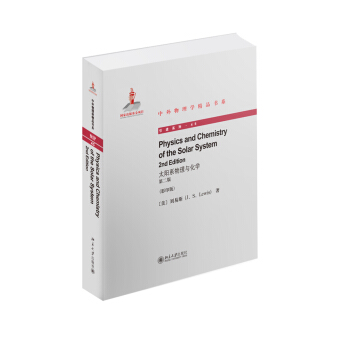
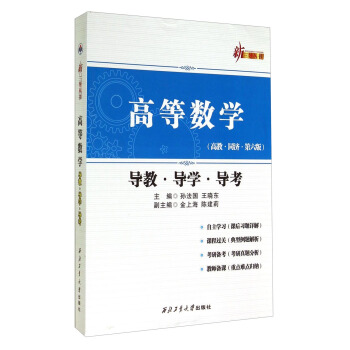
![科技创新辞典 [A Dictionary of Science and Technology Innovation] pdf epub mobi 电子书 下载](https://pic.tinynews.org/11644989/54dbf448N03c37483.jpg)
![运筹与管理科学丛书24:A First Course in Graph Theory(图论基础教程) [A First Course in Graph Theory] pdf epub mobi 电子书 下载](https://pic.tinynews.org/11675096/552e2682N5a91153d.jpg)

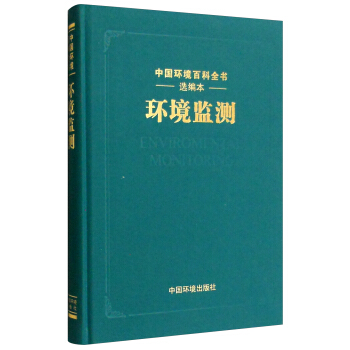
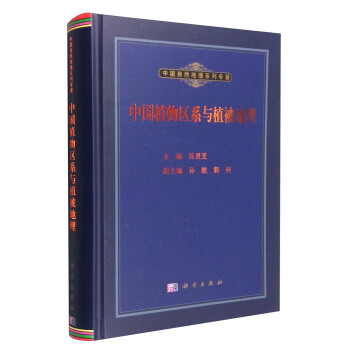

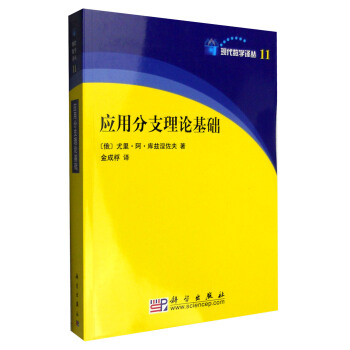
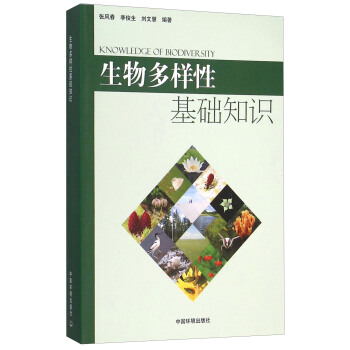
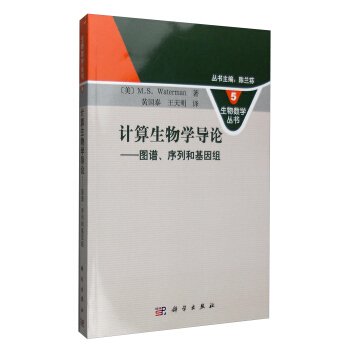

![从高维Pythagoras定理谈起:单形论漫谈 [Discussion from the Multidimensional of Pythagoras Teherem:The Theory of Simplex Rambling] pdf epub mobi 电子书 下载](https://pic.tinynews.org/12026995/58774a5eNf8ed2f10.jpg)
![气-水两相流传热传质及其应用研究 [Research on Heat and Mass Transfer of Gas-water Two-phase Flow and Their Applications] pdf epub mobi 电子书 下载](https://pic.tinynews.org/12061629/58e6f5acNad032397.jpg)

![Buffon投针问题 [Buffon Needle Problem] pdf epub mobi 电子书 下载](https://pic.tinynews.org/12096434/58774a61Nc8dc37a2.jpg)